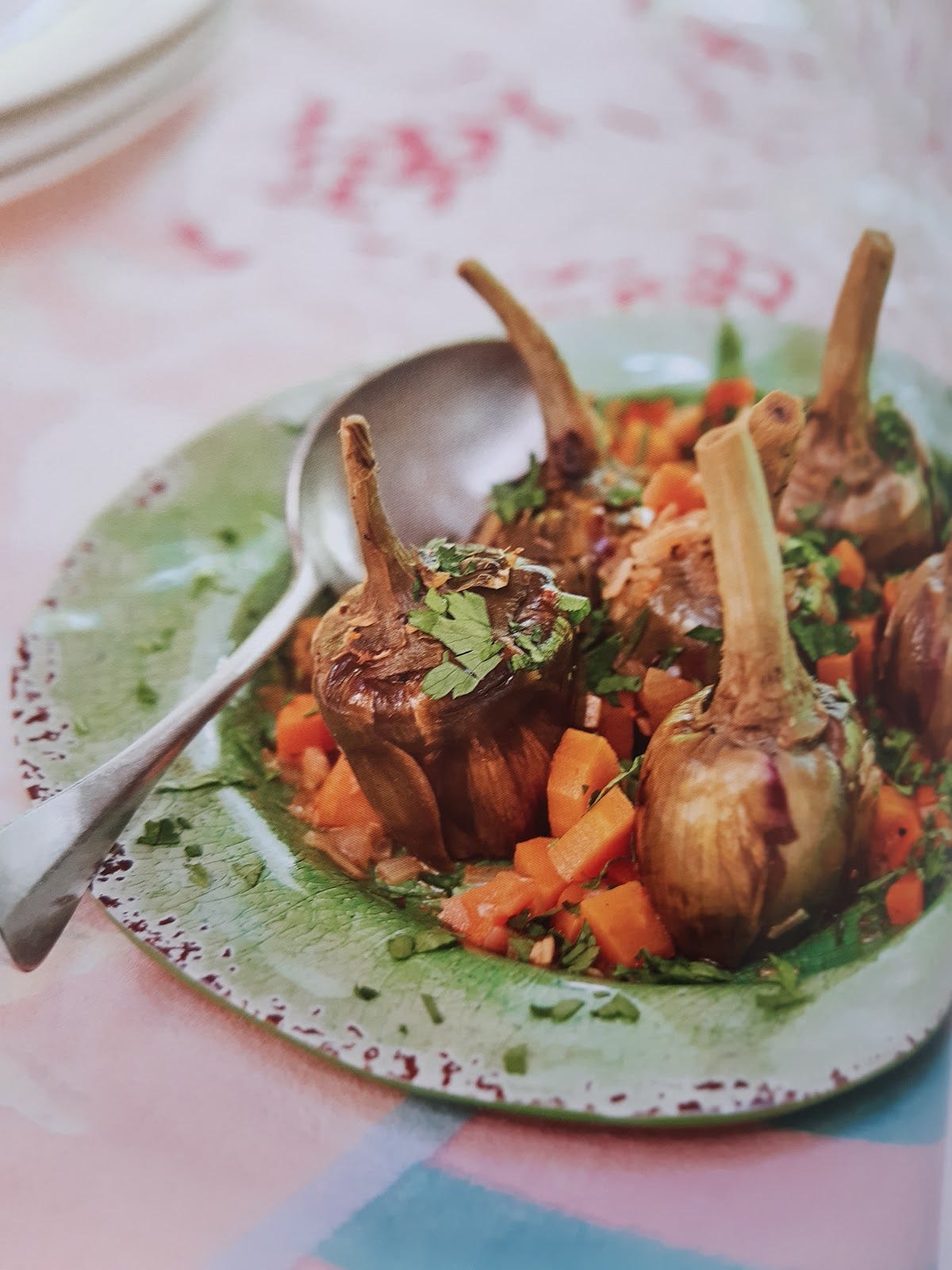Find more newsletters with recipes here.
The closed town of Military Unit 26266, more cosily known as Zvyozdny Gorodok or, with a Soviet era nod to branding, Star City, is just under an hour’s drive from Moscow. It’s the location of the Yuri Gagarin Cosmonaut Training Centre.
On the first press trip there ever, it was clear to us hacks that sputniks and rockets weren’t all the Centre manufactured. Those were superior exceptions to the factory’s main line: Spacecraft to the left, prams and washing machines to the right, a Stealers Wheel kind of plant...
We were ushered into a dark room in which a glass case stood in pride of place, bathed in an amber glow. In the middle of it, pinned like a prima ballerina by a spotlight, was a little saucer. On the saucer was a head of garlic and a small salami sausage. The label on the display declared this to be the nourishment taken by Gagarin in his orbit of the earth.
It was strangely moving - a 27-year old man in a 83.6kg/184lb tin can hurtling through the heavens munching on raw garlic and slices of cured sausage.
Some years later, I went to a similar exhibition at Washington DC’s Air & Space Museum. American astronauts had picnicked on toothpaste tubes of pureed beef-and-vegetables and apple sauce squeezed directly into the mouth.
That innovation, producing a menu of deconstructed entrees with freeze-dried ice cream to follow, has led to a suddenly booming industry converting plants and proteins into ersatz meat and fish for people with their feet very much on the ground.
If response to its recent launch in a Vienna restaurant is positive, soon you’ll be able to order a helping of 3-D printed slices of a “really amazing salmon analogue” to pleat across your cream cheese bagel. Can you wait?
It’s conjured from pea protein, algae extracts, plant oils, citrus fibres and seven other ingredients (as against wild salmon’s single one). The future of ‘ffysch’, or however they’ll spell it, has arrived.
The people behind this development point out that unlike real fish, their salmon won’t be polluted by heavy metals, microplastics and PCBs - unless someone has been lax in cleaning the printer that creates those slices loaded onto your Brunch Special.
US sales of plant-based products to replace animal products have grown by nearly a third in the past two years, raising $5 billion in sales. In Europe, they’re increasing by 10% annually.
Legumes could be taking over.
A US plant-based meat production company, Beyond Meat, has just signed a 3-year deal with McDonald’s for their McPlant burger. They’re also looking into plant-based replacements for chicken, pork, and egg. Yum! Brands is working on plant-based protein for KFC, Pizza Hut and Taco Bell.
Meat alternatives are created by extracting proteins from peas, brown rice, mung beans and other legumes. Why are we so determined to replicate meat and fish? What is wrong with feasting on variations of falafel?
It seems we’re addicted to flesh. Globally, the amount of calories consumed through meat products is put by some surveys at 30%. In 1960, Americans ate 167 pounds a head of red meat and poultry. By 2018, 220 pounds.*
The global meat market could be worth as much as $2.7 trillion by 2040. That’s a figure to have the four producers in the US who control over two-thirds of all beef processing - Tyson Foods, JBS, Cargill and National Beef - absolutely salivating.
So they may be alarmed that in the 9 weeks ending on 2 May, 2020, sales of vegan meat increased by 264%. Already the animal meat supply chain is facing losses in 2020 of over $20 billion.
It could be that Covid19’s transmissibility has had an influence. Just picture the feedlots and processing plants, transportation and storage centres, that have gone into putting your steak on your plate.
How secure are they from more virus outbreaks than already occur?
For the sake of common decency and the planet, we have to move away from meat reared in any intensive and abusive way. But why don’t we do so by eating in their natural state the plants and legumes being processed down to produce meat substitutes? After all, anatomically, we’re herbivores. Across great swathes of the world, nations base their diets on plants and grains and legumes, using meat, if at all, in miniscule quantities as a flavour not a focus.
There is much to learn from global cuisines that don’t practise carnivorous greed. Take inspiration from the kitchens of the Mediterranean, the Middle East, South East Asia and South America for plant-based meals so delicious - and economical - you won’t miss your meat.
Start with this spring recipe from France.
Serves 4
8 artichokes ‘Violets’ (the small purple-tinged variety)
Juice of 1 lemon
6 tablespoons olive oil
2 shallots
2 young carrots, washed and finely cubed
½ teaspoon Herbes de Provence
1 clove garlic, peeled and finely minced
Salt and pepper to taste
80ml/2 ¾ fl oz white wine
Small bunch flat leaf parsley, leaves roughly chopped
Bend back and snap off the artichoke leaves till you reach the pale lemon ones. Slice the heads across to remove the more fibrous top half or third of the leaves. Cut the stalks to 4cm/2 inches long and peel, throwing the artichokes as you go into a pan of water containing the juice of a lemon to prevent oxidation. ‘Violets’ and similar types are small and sold young enough to make removing the inner choke unnecessary. But if they have matured, slice them in two, top to stem, and scrape out their chokes with the point of a teaspoon.
Pour half the olive oil into a roomy saucepan. Add the shallots, carrots, Herbes de Provence and garlic, and sweat everything gently over medium-low heat about 5 minutes, stirring regularly. Push the vegetables to the edges of the pan and add the artichokes. Drizzle over the remaining oil, season, cover the pan and stew gently for 5 minutes, then pour over the wine, cover again and shake the pan gently. Lower the heat right down and simmer for 30 minutes or until a knife point slides easily into the base of the artichokes, stirring the artichokes at least once during the process to make sure they don’t catch. If they are beginning to, add a little water.
Set the artichokes on a warm serving dish stems up, spoon over the contents of the pan and cooking juices, then sprinkle over chopped parsley. Serve hot or at room temperature, as a starter, or a side dish to roast meat.
*According to the USDA



